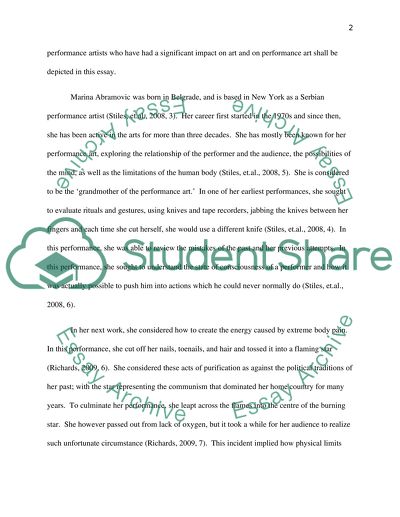Cite this document
(“Performance Art Essay Example | Topics and Well Written Essays - 2250 words”, n.d.)
Performance Art Essay Example | Topics and Well Written Essays - 2250 words. Retrieved from https://studentshare.org/visual-arts-film-studies/1452568-discuss-how-the-institution-of-art-was-shaken-by
Performance Art Essay Example | Topics and Well Written Essays - 2250 words. Retrieved from https://studentshare.org/visual-arts-film-studies/1452568-discuss-how-the-institution-of-art-was-shaken-by
(Performance Art Essay Example | Topics and Well Written Essays - 2250 Words)
Performance Art Essay Example | Topics and Well Written Essays - 2250 Words. https://studentshare.org/visual-arts-film-studies/1452568-discuss-how-the-institution-of-art-was-shaken-by.
Performance Art Essay Example | Topics and Well Written Essays - 2250 Words. https://studentshare.org/visual-arts-film-studies/1452568-discuss-how-the-institution-of-art-was-shaken-by.
“Performance Art Essay Example | Topics and Well Written Essays - 2250 Words”, n.d. https://studentshare.org/visual-arts-film-studies/1452568-discuss-how-the-institution-of-art-was-shaken-by.


